Resources
This carefully curated collection of resources will help you find packages and learning resources to help you on your R journey.

Use meta shortcode variables with Quarto Includes to insert precise content - Posit
This blog post by Ashley Henry at Posit discusses how to use meta shortcode variables with Quarto Includes to ensure precise content insertion in your documentation. It delves into the benefits of using Quarto, a system for technical writing that enhances the insertion process by allowing for better customization and modularity. The post is targeted at users who are involved in the documentation process and are looking for methods to optimize content consistency while maintaining flexibility. Ashley Henry also shares her expertise from her time in the Navy and at Posit, where she focuses on clear and effective documentation.
Go to Resource

Use of flextable – Notes from a data witch
This content intertwines a tutorial on using the flextable package in R with personal reflections on the book 'Use of Weapons' by Iain Banks. It starts with a nostalgic recollection from the author's past, and leads into an exploration of crafting tables in R. The post integrates a fondness for the Culture novels by Banks, touching upon aspects of storytelling within a technical guide. The aim is to show how the flextable package enhances data representation, paralleling the way stories weave narratives, thereby making data more approachable and engaging, just like a good science fiction universe.
Go to Resource
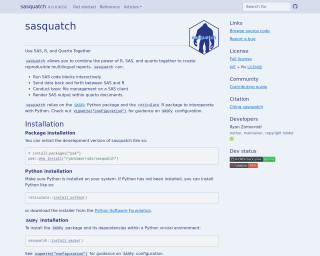
Use SAS, R, and quarto Together • sasquatch
sasquatch is an R package that enables the integration of SAS, R, and Quarto for creating reproducible multilingual reports. It utilizes SASPy and reticulate to run SAS code blocks within R, transfer data between SAS and R, perform SAS client file management, and render SAS output in quarto documents. The package includes installation instructions for development version, Python, and SASPy. It offers functionality such as interactive execution of SAS code, data conversion between R and SAS, and rendering quarto documents with SAS output, distinguishing it from similar packages like sasr, configSAS, and SASmarkdown.
Go to Resource
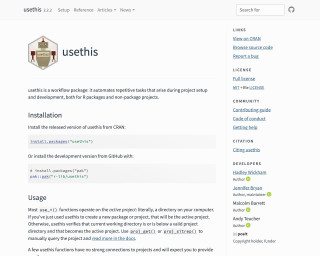
usethis
usethis is a workflow package that automates repetitive tasks that arise during project setup and development, both for R packages and non-package projects.
Go to Resource

Using project scripts to keep Quarto source and output files organised
Pete Jones provides a tip for managing Quarto projects where the user wants to separate source (.qmd files) and output (.pdf, .html, etc.) files, especially when source files are in a subdirectory. The article addresses the problem that arises when Quarto's default settings place rendered output next to source files, which can create organizational issues in projects. The article intends to show how to overcome this by leveraging Quarto's features to keep files neatly organized within project subdirectories.
Go to Resource

Using project scripts to keep Quarto source and output files organised
Pete Jones shares a tip for organizing Quarto project files, focusing on separating source (.qmd) and output (.pdf, .html) files when source files are stored in subdirectories. This is a particular challenge due to Quarto's default behavior of placing output files next to their source. The article discusses project-based workflows, the issues with Quarto subdirectories, and leverages Quarto features to solve the problem. A scripted solution is presented to ensure outputs are organized in a specified directory, maintaining a clean project structure even with source files in subdirectories.
Go to Resource
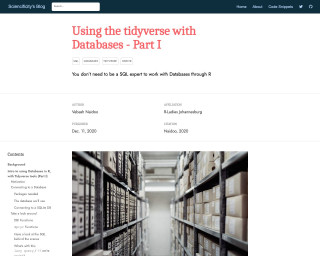
Using the tidyverse with Databases
Using the tidyverse with Databases - Part I is a tutorial that provides an introduction to using databases in R with Tidyverse tools. The tutorial covers topics such as motivation, connecting to a database, using DBI and dplyr functions, executing queries with dbplyr, and more.
Go to Resource
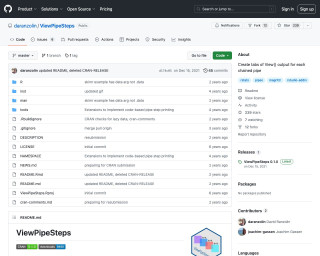
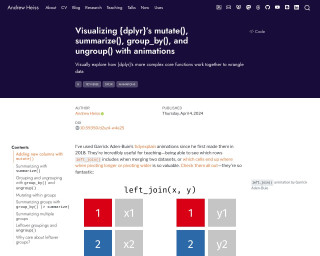
Visualizing {dplyr}’s mutate(), summarize(), group_by(), and ungroup() with animations
Andrew Heiss explores {dplyr} functions like mutate(), summarize(), group_by(), and ungroup() through handmade animations. Heiss illustrates the complexities of data manipulation workflow steps that are not immediately obvious when performing operations like adding new columns or summarizing data. This tutorial helps conceptualize the impact of these functions on data frames by visualizing their behind-the-scenes mechanics. The animations serve as an effective teaching tool to demystify what happens to data during different stages of the tidyverse's split/apply/combine paradigm, using handcrafted illustrations to make the learning process more intuitive.
Go to Resource
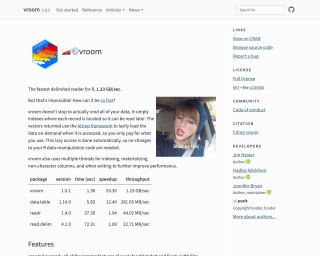
vroom
vroom is a package in R that provides the fastest delimited reader. It uses lazy loading and multiple threads for improved performance. It supports various parsing features, such as delimiter guessing, custom delimiters, column types specification, and more.
Go to Resource
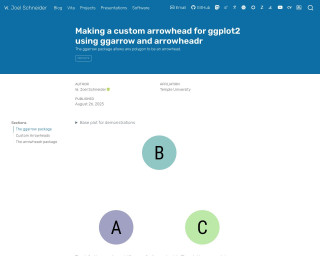
W. Joel Schneider
This text demonstrates the usage of arrow geometries in ggplot2 for creating custom arrowheads.
Go to Resource
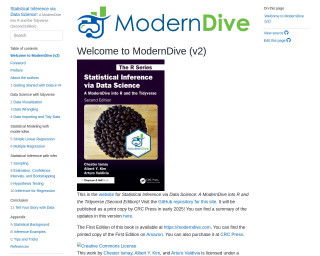
Welcome to ModernDive (v2) | Statistical Inference via Data Science
ModernDive (v2) is the website for 'Statistical Inference via Data Science: A ModernDive into R and the Tidyverse (Second Edition)'. It showcases updates from the first edition, which is available online and for purchase. The book, authored by Chester Ismay, Albert Y. Kim, and Arturo Valdivia, teaches R and data science concepts. It's scheduled for print by CRC Press in 2025 and is licensed under Creative Commons. Readers can contribute on GitHub and anticipate a resource-rich approach to stats with a focus on tidyverse tools for data analysis.
Go to Resource